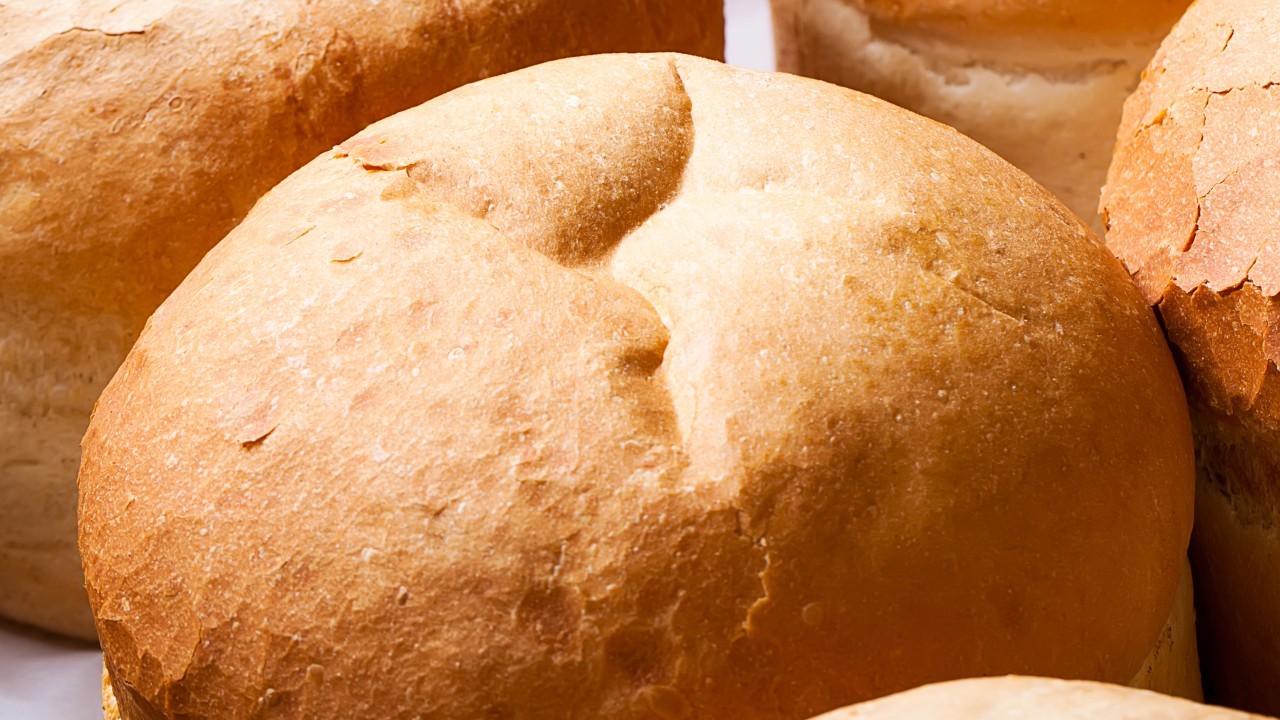

Sat, 16 March 2024

RECIPE:
1000 strong white flour
20g salt
20g fresh yeast or if you only have access to dried yeast use 1 sachet or 7 g
700g buttermilk
METHOD:
1). Mix the flour, and salt in a clean bowl. Crumble the yeast into the flour. Add the buttermilk to
the flour. If you are using buttermilk directly from the fridge you will find that the bread will take
longer to prove, which isn't a bad thing. The longer bread proves the more flavour that gets to
develop. However it is important to maximise proving without over proving.
2). Bring the dough together with your hands or with a spatula. Turn the dough out onto a clean
surface and knead for approximately 10 minutes or until the windowpane effect has been
achieved. The dough should be soft and elastic.
3). Place the dough in an oiled bowl, cover with a damp tea towel or wrap in cling film and leave
to proof for 90 mins.
4). Turn the proved dough out and knock it back. Divide the dough into 4 equal portions,
approximately 450g each. Shape each portion of dough into a rough round and leave them to
rest on the counter for 10 minutes. We call this the bench rest. This allows the gluten to relax
before final shaping.
5). Traditionally batch bread is shaped onto a baking tray surrounded by a wooden frame. The
frame supports the dough ensuring high sides to your bread. The bread can be baked without
the frame. All that will happen is that the final loaf may not have the same height as when baked
within the frame. However the flavour will still be great. A large square cake tin also works great
to mimic this frame. Alternatively just shape the loaves without a frame.
6). Once the dough has rested, roll each portion of dough into a tight wrap and place onto your
baking tray allowing each portion of dough to just touch each other. Should fit four loaves on
one tray. 2 x 2.
7). Cover and allow to prove again for about 60 to 90 minutes. Just before baking the dough
should be well risen with a nice bounce to the dough when touched. There should be no fear of
the dough collapsing when touched
8). Preheat the oven to 220°C/425°F/gas mark 7. Place a roasting tray into the base of the
oven.
9). When ready to bake, place the loaves into the oven and pour in water from a boiling kettle
into the hot roasting tray which should release a blast of steam. Bake the loaves for about 35-40
minutes.
10). Resist the temptation to get stuck in until the loaf cools.
Fri, 19 December 2025
Chef Eric Osbourne
View More.